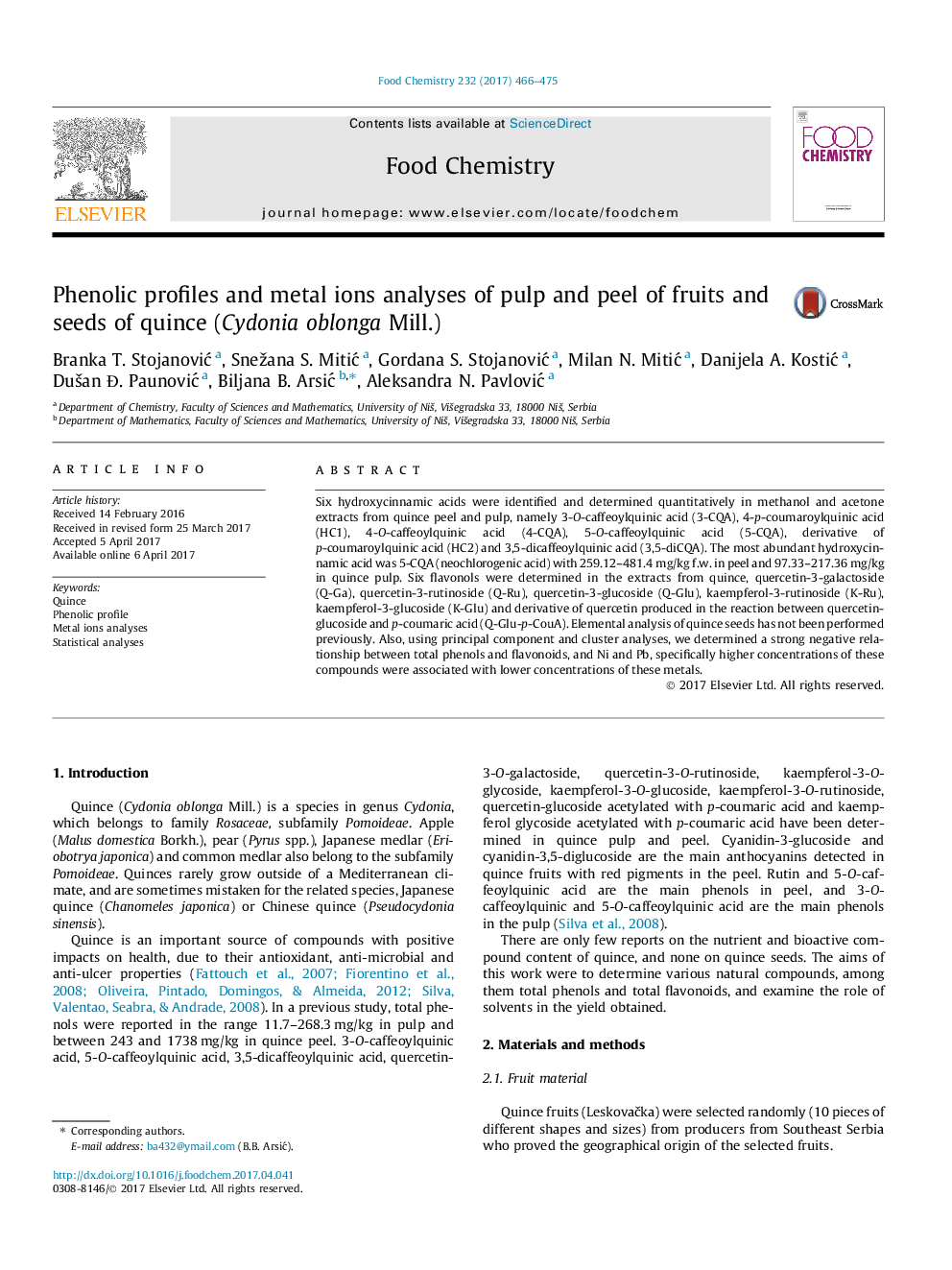| Article ID | Journal | Published Year | Pages | File Type |
|---|---|---|---|---|
| 5133428 | Food Chemistry | 2017 | 10 Pages |
â¢Before us nobody performed the elemental analysis of quince seeds.â¢Six hydroxycinnamic acids were found in the extracts of quince peel and pulp.â¢The most abundant hydroxycinnamic acid in quince peel and pulp is 5-CQA.â¢Six flavonols were determined in the extracts of quince.â¢Statistics show strong negative correlation between flavonoids and toxic metals.
Six hydroxycinnamic acids were identified and determined quantitatively in methanol and acetone extracts from quince peel and pulp, namely 3-O-caffeoylquinic acid (3-CQA), 4-p-coumaroylquinic acid (HC1), 4-O-caffeoylquinic acid (4-CQA), 5-O-caffeoylquinic acid (5-CQA), derivative of p-coumaroylquinic acid (HC2) and 3,5-dicaffeoylquinic acid (3,5-diCQA). The most abundant hydroxycinnamic acid was 5-CQA (neochlorogenic acid) with 259.12-481.4 mg/kg f.w. in peel and 97.33-217.36 mg/kg in quince pulp. Six flavonols were determined in the extracts from quince, quercetin-3-galactoside (Q-Ga), quercetin-3-rutinoside (Q-Ru), quercetin-3-glucoside (Q-Glu), kaempferol-3-rutinoside (K-Ru), kaempferol-3-glucoside (K-Glu) and derivative of quercetin produced in the reaction between quercetin-glucoside and p-coumaric acid (Q-Glu-p-CouA). Elemental analysis of quince seeds has not been performed previously. Also, using principal component and cluster analyses, we determined a strong negative relationship between total phenols and flavonoids, and Ni and Pb, specifically higher concentrations of these compounds were associated with lower concentrations of these metals.
